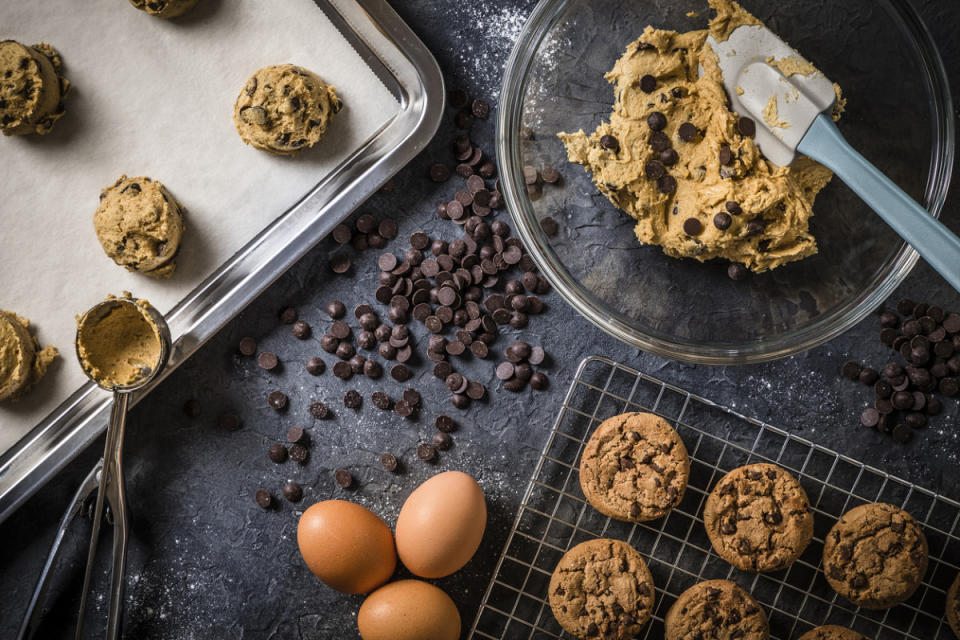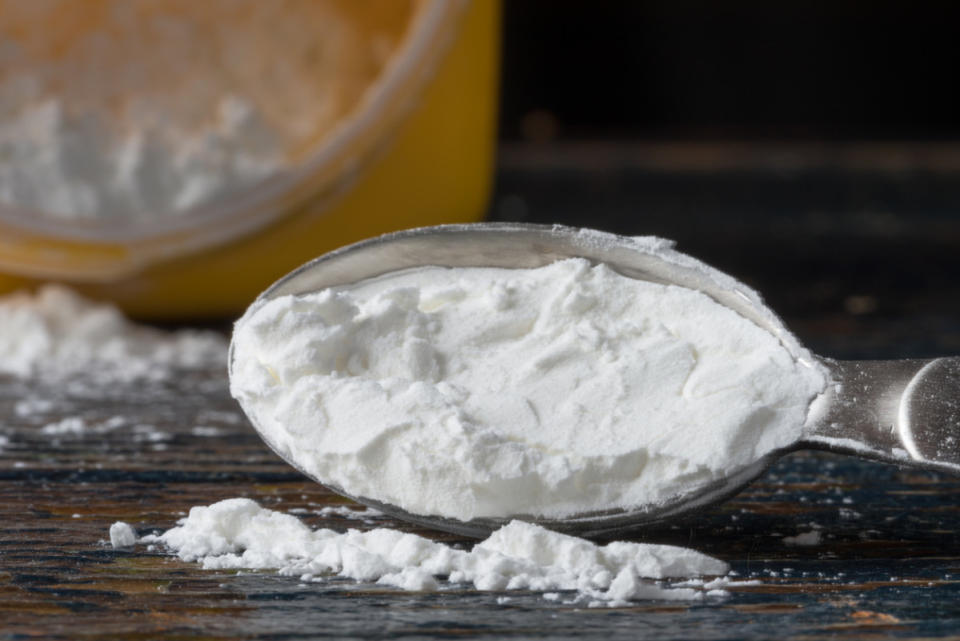The Easy Trick for Irresistibly Soft & Chewy Cookies

Soft and chewy cookies
It’s the most wonderful time of the year, again. Christmas cookie time!
Cookie-lovers typically fall into two camps—those who like ‘em crunchy and and those who like ‘em soft and chewy. But what makes a cookie soft and chewy? And if this is how you prefer your cookies, how do you make sure your cookies turn out that way? We were curious too, so we turned to baking science expert Sarah Visintainer, who has hundreds of thousands of followers on TikTok and Instagram under the handle @halfbatchbaking.
To be a next-level cookie baker, it's important to understand how different ingredients and even different temperatures of ingredients (eggs for example) affect your bakes. Armed with that knowledge you can look for recipes that align with your perfect cookie texture and maybe even adjust your favorite recipes to make them more to your liking. This info is also super handy when troubleshooting when things go sideways in the kitchen. That's the delicious power of science!
After quizzing Visintainer, we're sure that you can turn out the best cookies ever. Here are her top tips for making soft and chewy cookies, so go forth and bake!
Related: 200+ Best Christmas Cookie Recipes

iStock
Top Tips for Making Soft and Chewy Cookies
First of all, Visintainer recommends choosing recipes with at least some of the following ingredients if you prefer a softer, chewier cookie. After you've found a recipe (or adjusted yours) with some of these ingredients, there are also mixing and baking tips that will help you create the soft and chewy cookies you're after.
• Try cornstarch: “All starch granules, when exposed to heat and moisture, undergo gelatinization—the granules will absorb liquid, soften, swell, and eventually burst. Starch is excellent at retaining water, a critical factor in achieving a chewy and soft texture. Unlike other starches, cornstarch doesn't dry out in the oven, making it ideal for maintaining moisture during baking. Its moisture-absorbing properties also prevent excessive water absorption by flour. Increased water in flour leads to more gluten development, which results in a crumbly, crunchy cookie instead of a soft and chewy one.”
• Consider shortening, clarified butter and oils: Oils or pure butterfat (i.e. clarified butter and ghee) “coat flour and inhibit gluten development, which will result in a delicate crumb soft cookie. The cookies will be more dense. Opt for a cookie recipe that calls for oil or ghee vs swapping butter for oil.”
• Look for liquid sweeteners: “A liquid sweetener, like molasses or corn syrup, can produce a chewier texture. Sugar is hygroscopic, meaning it holds and retains water. Syrups introduce moisture to the cookies, preventing them from drying out. Additionally, corn syrup inhibits sugar crystallization, which can result in a crunchy texture.”
• Egg yolks = richness: “The addition of fat and moisture from yolk equals softer, richer, more tender cookies.”
• Don’t overmix: “Overworked gluten can result in a crumbly, crunchy cookie,” she says. When you're mixing your dough, take it easy.
• Chill out: Visintainer says refrigerating your cookie dough often leads to a softer, chewier cookie that stays fresher longer. “Refrigeration allows the gluten in the dough to relax and the sugar granules to absorb free water. Gluten development occurs when water is added to flour, and the two proteins in flour hydrate and form bonds. The more water added or the more you work the gluten, the tighter the gluten strands become. In the case of cookies, overmixing can lead to tight and interconnected gluten strands, resulting in a less desirable texture. Consequently, when you bake a cookie that has been chilled for 24 hours, there is less water escaping during the baking process,” she explains.
• Try a water bath: “The oven uses hot air to transfer heat, so an oven is a dry environment and does not always distribute heat evenly. When cookies are placed in an oven with a water bath (not in a water bath like cheesecake, but above a water bath), the water acts as a thermal mass, absorbing heat from the oven and releasing it more gradually and evenly, which prevents hot spots and helps to buffer temperature fluctuations. As water evaporates; it creates a humid environment vs dry, which helps prevent the cookies from drying out resulting in a chewy/soft cookie. Additionally, water acts as an insulator preventing direct heat from the oven to the cookies,” she explains. All you have to do to try this is place a metal baking tray or pan filled with 2 to 3 inches of water on a rack below the tray of cookies as they bake.
• Avoid overbaking (and even try underbaking): “Taking cookies out of the oven just as they set or a minute before will yield a smoother texture. Baking too long can result in a dry crumbly cookie,” she says.
Related: 45 Must-Bake Cookies for Christmas

iStock
Some Important Notes About Cornstarch in Cookies
While adding cornstarch to a cookie recipe can definitely yield a soft and chewy cookie, Sarah has some tips when deciding which recipes might be a good candidate for this experimentation and which might not:
“Cornstarch is not ideal for freezing or in acidic conditions,” she says.
“When you freeze cookie dough with cornstarch, the water molecules in the starch will change to ice crystals and expand,” she explains, adding that “the freezing/thawing causes damage to the starch, and it loses its moisture retention properties.” This is why she doesn’t recommend freezing cookie dough or cookies made with cornstarch.
Additionally, Visintainer says cornstarch breaks down in acidic environments, so it might not be as effective in a recipe with higher acidity, like lemon cookies. “Excessive starch may absorb all the liquid, resulting in a thick, gel-like cookie rather than a light, airy one,” she adds.
And beyond science, “people can sometimes detect the presence of cornstarch, describing it as chalky or grainy, so too much cornstarch risks a chalky taste, potential bitterness, and a dense, heavy texture,” she says.
She says to think of making any changes to a cookie recipe as a science experience, which means it could work or it could not work (so don’t try it if you’re in a crunch). “It depends on the cookie recipe, and be cautious when adjusting a recipe… I would start with a small amount of cornstarch, like 1 teaspoon, in a batch of cookies to test,” she says.
Related: The Genius Way to Chill Cookie Dough in 15 Minutes Flat
More Smart Cookie Tips You Need to Know
• How to Keep Your Sugar Cookie Dough From Sticking
• How to Soften Butter in 5 Minutes
• The Secret Ingredient to the Best-Ever Sugar Cookies
• The Easy Way to Make Perfectly Round Cookies
• How to Make Picture-Perfect Spritz Cookies
Up next: Ina Garten's Shortbread Cookies Are Buttery, Chocolate-Dipped Perfection

